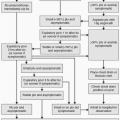Transvenous Biopsy
Matthew G. Gipson
Rajan K. Gupta
Histopathologic analysis of the liver and kidney remain the gold standard for the diagnosis and evaluation of acute and chronic liver disease and most renal parenchymal diseases. Percutaneous liver and kidney biopsies were initially described in 1883 and 1951, respectively, and developments in technique have improved efficacy and safety of the procedure (1,2). In patients with contraindications to transabdominal biopsy, a transvenous approach is a well-established method to obtain diagnostic tissue safely (3,4).
Indications
1. Transvenous liver biopsy (5)
a. Patients with diffuse liver disease who have contraindication to percutaneous biopsy including those with a coagulation disorder, ascites, peliosis hepatis, or morbid obesity
b. Patients who require hemodynamic assessment as part of their diagnostic workup
2. Transvenous kidney biopsy
a. Patients with suspected renal disease who are at high risk for percutaneous biopsy including those with a coagulation disorder or morbid obesity
b. After failed percutaneous renal biopsy
Contraindications
Relative
1. Lack of suitable venous access (superior vena cava obstruction)
2. Diagnosis of focal lesions
3. Uncorrectable coagulation parameters
Preprocedure Preparation
1. Indication for procedure, medical/surgical history, and pertinent imaging is reviewed. Transplantation anatomy is particularly pertinent.
2. Focused physical exam is performed.
3. Informed consent obtained detailing risks specific for the procedure with discussion regarding need for possible blood transfusion if periprocedural bleeding occurs. Consent for possible percutaneous biopsy for all cases; anatomy may preclude safe biopsy in a minority of patients.
4. Prothrombin time (PT)/international normalized ratio (INR), partial thromboplastin time (PTT), platelet count, and serum creatinine level are obtained. Each institution should establish acceptable coagulation parameters; as a general guideline, INR <2.0 and platelets >50,000 per µL of blood are acceptable. If the clinical situation dictates biopsy, these parameters may be exceeded, for example, in patients with fulminant liver failure where correction may be impossible.
5. All patients receive peripheral intravenous (IV) access to facilitate sedation.
Procedure
1. Transvenous access
a. Patient is positioned supine on the fluoroscopic table.
b. Minimizing sedation initially is helpful for obtaining accurate and reproducible hepatic venous pressures. Additional sedation may be given prior to biopsy.
c. Right internal jugular access is preferred, given direct anatomic alignment with superior vena cava/inferior vena cava (IVC).
d. After local anesthesia with 1% lidocaine, internal jugular venous access is achieved using direct ultrasound guidance. A 5 Fr. introducer catheter is replaced for a 9 Fr. vascular sheath.
2. Liver biopsy
a. Two U.S. Food and Drug Administration (FDA)-approved transjugular liver biopsy sets are available for use and include (a) TLAB-Patel Set (Argon Medical, Plano, TX)—available with an 18- or 19-gauge Flexcore biopsy needle and (b) LABS-100/200 set (Cook Medical, Bloomington, IN)—available with an 18- or 19-gauge Quick-Core biopsy needle.
b. Using an angled 5 Fr. multipurpose catheter (MPA) (Cook Medical, Bloomington, IN) and hydrophilic guidewire, cannulate the right hepatic vein (RHV). If the hepatic venous angle is acute, a reverse curve catheter such as an SOS Omni selective catheter (AngioDynamics, Latham, NY) can be helpful to obtain access into the hepatic veins. The RHV is preferred because it is posterior in the liver and biopsy will be directed anteriorly. Selection of the RHV can be confirmed by rotating the fluoroscopic tube into an oblique orientation to confirm that the wire is directed posteriorly.
c. Perform hepatic venography through the 5 Fr. catheter to assess patency of selected vein. Transvenous hepatic pressures can be obtained if indicated.
d. Over a 0.035-in., 145-cm Amplatz wire (Cook Medical, Bloomington, IN), advance the stiff-angled guide cannula supplied in the transjugular biopsy kit distally into the RHV.
e. Advance biopsy needle through guide cannula and before advancing the needle into the hepatic parenchyma, rotate angled guide cannula (positioned in RHV) anteriorly directed into the right hepatic lobe.
f. Obtain samples from central portion of the liver, avoiding transcapsular punctures. Mild forward pressure on the cannula during needle exchanges will prevent retraction into the IVC.
g. Deploy biopsy needle after advancing needle into parenchyma. Remove needle from guide cannula and place specimen in formalin container; care should be taken to reduce sample fragmentation.
h. Repeat biopsy until sample deemed adequate for diagnosis.
i. Stiff-angled guide cannula and vascular sheath are now removed; manual pressure is applied at venotomy site until hemostasis achieved.
j. Specimen is delivered to appropriate lab.
3. Kidney biopsy
a. Equipment: renal access and biopsy set (RABS-100, Cook Medical, Bloomington, IN)
b. Using an angled 5 Fr. MPA and hydrophilic guidewire, cannulate the right renal vein. Advance the catheter into the posterior lower pole branch of the right renal vein.
Stay updated, free articles. Join our Telegram channel

Full access? Get Clinical Tree






